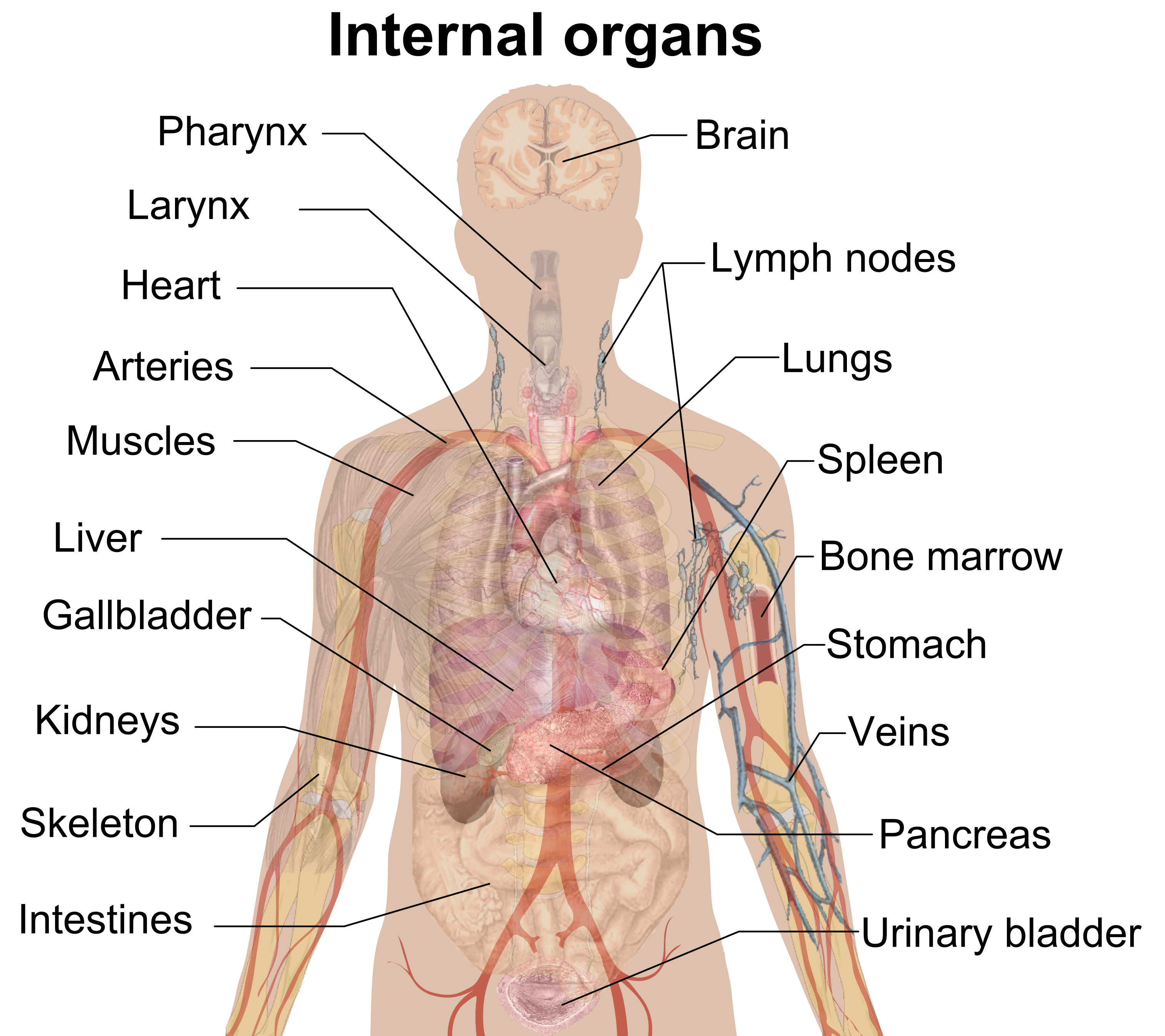
Organ (biology)
In a multicellular organism, an organ is a collection of tissues joined in a structural unit to serve a common function.[1] In the hierarchy of life, an organ lies between tissue and an organ system. Tissues are formed from same type cells to act together in a function. Tissues of different types combine to form an organ which has a specific function. The intestinal wall for example is formed by epithelial tissue and smooth muscle tissue.[2] Two or more organs working together in the execution of a specific body function form an organ system, also called a biological system or body system.
Organ
$_$_$DEEZ_NUTS#0__titleDEEZ_NUTS$_$_$
$_$_$DEEZ_NUTS#0__subtitleDEEZ_NUTS$_$_$
"Organs" and "Viscera" redirect here. For other uses, see Organs (disambiguation) and Viscera (disambiguation).
An organ's tissues can be broadly categorized as parenchyma, the functional tissue, and stroma, the structural tissue with supportive, connective, or ancillary functions. For example, the gland's tissue that makes the hormones is the parenchyma, whereas the stroma includes the nerves that innervate the parenchyma, the blood vessels that oxygenate and nourish it and carry away its metabolic wastes, and the connective tissues that provide a suitable place for it to be situated and anchored. The main tissues that make up an organ tend to have common embryologic origins, such as arising from the same germ layer. Organs exist in most multicellular organisms. In single-celled organisms such as members of the eukaryotes, the functional analogue of an organ is known as an organelle. In plants, there are three main organs.[3]
The number of organs in any organism depends on the definition used. By one widely adopted definition, 79 organs have been identified in the human body.[4]
$_$_$DEEZ_NUTS#2__titleDEEZ_NUTS$_$_$
$_$_$DEEZ_NUTS#2__descriptionDEEZ_NUTS$_$_$
$_$_$DEEZ_NUTS#4__descriptionDEEZ_NUTS$_$_$
$_$_$DEEZ_NUTS#6__titleDEEZ_NUTS$_$_$
$_$_$DEEZ_NUTS#6__descriptionDEEZ_NUTS$_$_$
$_$_$DEEZ_NUTS#6__heading--0DEEZ_NUTS$_$_$
$_$_$DEEZ_NUTS#6__description--0DEEZ_NUTS$_$_$
$_$_$DEEZ_NUTS#7__titleDEEZ_NUTS$_$_$
$_$_$DEEZ_NUTS#7__descriptionDEEZ_NUTS$_$_$
$_$_$DEEZ_NUTS#8__titleDEEZ_NUTS$_$_$
$_$_$DEEZ_NUTS#8__descriptionDEEZ_NUTS$_$_$
$_$_$DEEZ_NUTS#8__heading--0DEEZ_NUTS$_$_$
$_$_$DEEZ_NUTS#8__description--0DEEZ_NUTS$_$_$
$_$_$DEEZ_NUTS#3__titleDEEZ_NUTS$_$_$
$_$_$DEEZ_NUTS#3__subtextDEEZ_NUTS$_$_$
$_$_$DEEZ_NUTS#9__titleDEEZ_NUTS$_$_$
$_$_$DEEZ_NUTS#9__descriptionDEEZ_NUTS$_$_$
$_$_$DEEZ_NUTS#1__titleDEEZ_NUTS$_$_$
$_$_$DEEZ_NUTS#1__subtextDEEZ_NUTS$_$_$
$_$_$DEEZ_NUTS#10__titleDEEZ_NUTS$_$_$
$_$_$DEEZ_NUTS#10__subtextDEEZ_NUTS$_$_$
$_$_$DEEZ_NUTS#11__titleDEEZ_NUTS$_$_$
$_$_$DEEZ_NUTS#11__descriptionDEEZ_NUTS$_$_$
$_$_$DEEZ_NUTS#12__titleDEEZ_NUTS$_$_$
$_$_$DEEZ_NUTS#12__subtextDEEZ_NUTS$_$_$
$_$_$DEEZ_NUTS#13__titleDEEZ_NUTS$_$_$
$_$_$DEEZ_NUTS#13__subtextDEEZ_NUTS$_$_$
$_$_$DEEZ_NUTS#14__titleDEEZ_NUTS$_$_$
$_$_$DEEZ_NUTS#14__subtextDEEZ_NUTS$_$_$
$_$_$DEEZ_NUTS#15__titleDEEZ_NUTS$_$_$
$_$_$DEEZ_NUTS#15__subtextDEEZ_NUTS$_$_$